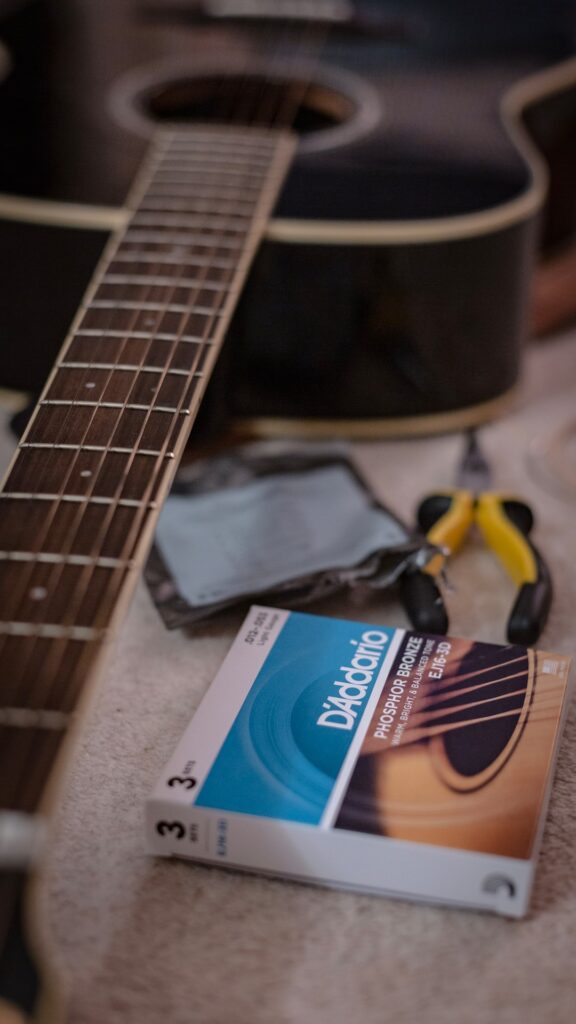How to Change Strings on a Bass Guitar
Are you ready to breathe new life into your bass guitar? Maybe you’ve noticed that your strings are losing their brilliance, or perhaps it’s been a while since you’ve changed them. Fear not, because I’m here to guide you through the process of changing your bass guitar strings, step by step. You’ll be amazed at the difference a fresh set of strings can make to your instrument’s tone and playability.
Interest
Before we dive into the nitty-gritty of changing bass guitar strings, let’s take a moment to reflect on the impact of fresh strings. Did you know that a study conducted by a leading musical instrument manufacturer found that changing strings can improve the overall sound quality of a bass guitar by up to 70%? That’s right – a simple string change can significantly enhance the tone and resonance of your instrument, making it sound crisper, brighter, and more defined.
Why Change Your Bass Guitar Strings
Sound Quality
Over time, bass guitar strings accumulate dirt, oils, and sweat from your fingers, causing them to lose their brightness and clarity. This buildup dampens the vibration of the strings, leading to a muffled and dull sound. By changing your strings regularly, you can restore the full spectrum of tones and harmonics to your bass guitar.
Playability
Worn-out strings can also affect the playability of your bass guitar. They may feel rough to the touch, making sliding and bending more challenging. Fresh strings offer a smooth playing experience, allowing you to effortlessly glide along the fretboard and execute techniques with precision.
Visual Appeal
Let’s not forget the visual aspect. A set of new strings can instantly revitalize the appearance of your bass guitar, giving it a polished and well-cared-for look. It’s a small change that can make a big difference in the aesthetic appeal of your instrument.
How to Change Your Bass Guitar Strings
Step 1: Gather Your Supplies
Before you begin, make sure you have all the necessary tools at hand. You’ll need a fresh set of bass guitar strings, wire cutters, a string winder (optional but handy), and a clean cloth to wipe down your instrument.
Step 2: Remove the Old Strings
Start by detuning the old strings to relieve the tension. Use your wire cutters to snip the strings near the tuning pegs and carefully unwind them from the bridge. Discard the old strings responsibly.
Step 3: Clean and Inspect
With the old strings off, take this opportunity to clean the fingerboard and the areas around the bridge and tuning pegs. A clean cloth lightly dampened with guitar polish or a gentle wood cleaner can help remove any built-up grime.
Step 4: Install the New Strings
Begin by inserting the ball end of each string into the corresponding bridge saddle. Then, carefully thread the other end of the string through the appropriate tuning peg, leaving a few inches of slack.
Step 5: Tune and Stretch
As you attach each string, use your string winder or fingers to tighten them to the correct pitch. Once all strings are attached, give each one a gentle tug to stretch them out. Repeat the tuning and stretching process until the strings hold their pitch.
Step 6: Trim Excess String
After the strings are tuned and settled, use your wire cutters to trim the excess length near the tuning pegs. Be cautious not to leave sharp ends that could cause injury.
Putting It Into Practice
Now that you’ve mastered the art of changing bass guitar strings, it’s time to put your skills to use. Make it a habit to change your strings regularly, aiming for every 3-6 months depending on how frequently you play. By staying on top of string maintenance, you’ll ensure that your bass guitar consistently delivers optimal performance and tonal richness.
Consider experimenting with different types of strings to find the perfect match for your playing style and musical preferences. Whether you prefer the warmth of flatwound strings or the bright bite of roundwounds, exploring various string options can open up new sonic possibilities for your bass playing.
Don’t forget to share your newfound knowledge with fellow bass enthusiasts. Offer to help friends or bandmates change their strings, or even consider organizing a string-changing workshop for your local music community. Your willingness to share your expertise can foster camaraderie and mutual support among fellow musicians.
Summary
Changing bass guitar strings is a simple yet impactful way to maintain the sound quality, playability, and aesthetics of your instrument. By following the step-by-step process and making string maintenance a regular part of your guitar care routine, you’ll reap the benefits of a fresh and vibrant sound every time you pick up your bass.
Remember, a well-cared-for instrument not only sounds better but also inspires you to play with enthusiasm and creativity. So, embrace the ritual of string changing as a means of nurturing your musical passion and enhancing your bass guitar’s sonic potential. Happy playing!











